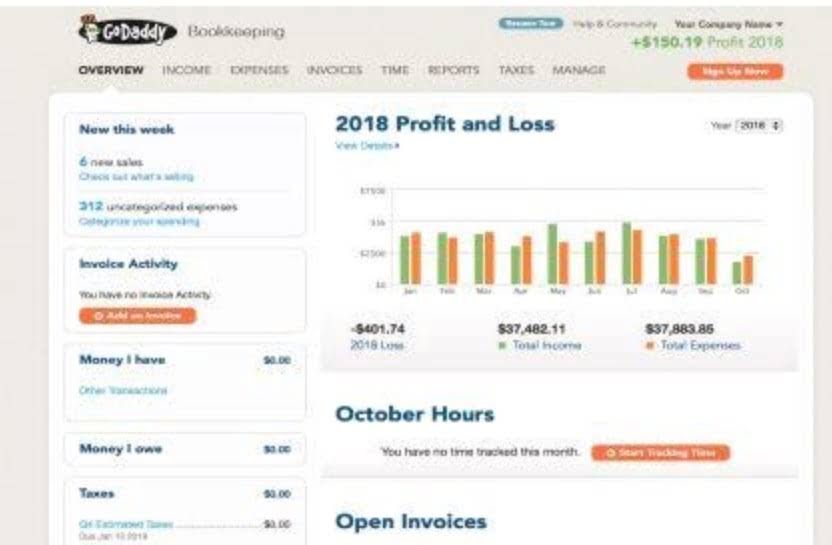
Common examples in manufacturing include factory rent, utilities, and depreciation on manufacturing equipment. There were fewer machine hours than estimated, but there was also less overhead than estimated. By leveraging Flxpoint’s comprehensive platform, businesses can effectively reduce overhead costs, leading to improved profitability and operational efficiency. This depends on the size and complexity of your business, but a good rule of thumb is to strike a balance between accuracy and practicality. For most small to medium businesses, categorizing overhead into 5-10 major categories (rent, utilities, indirect labor, etc.) is sufficient. Larger operations might break this down further into categories for better tracking and control.
Chegg Products & Services

Even for startups, having a basic understanding of your overhead costs is crucial. You might start with a simplified approach – perhaps using a percentage of direct costs or a rough per-unit estimate. As your business grows and becomes more complex, you can refine your methodology. Remember, even a rough predetermined rate is better than ignoring overhead entirely, which is a common mistake that leads to underpricing and cash flow problems. In order to find the overhead rate we will use the same basis that we have chosen by multiplying this basis by the calculated rate. For example, if we choose the labor hours to be the basis then we will multiply the rate by the direct labor hours in each task during the manufacturing process.
Step 3: Estimate Your Allocation Base
Now, forecast how many labor hours, machine hours, or total labor costs you expect over a given period. Overhead costs encompass all indirect expenses necessary for a business’s operations that cannot be directly traced to a specific product or service. These costs support the production process but do not become a physical part of the finished good.
Company
- If you applied more overhead than you actually incurred, that’s an over-applied overhead.
- If you have multiple departments with very different overhead structures, a single predetermined rate can cause serious distortions.
- Direct material and direct labor costs range from nonexistent to minimal in the service industry, which makes the overhead application even more important.
- The current sales price, cost of each product using ABC, and the resulting gross profit are shown in Figure 9.16.
- If an actual rate is computed monthly or quarterly, seasonal factors in overhead costs or in the activity base can produce fluctuations in the overhead rate.
In a company, the management wants to calculate the predetermined overhead to set aside some amount for the allocation of a cost unit. Therefore, they use labor hours for the apportionment of their manufacturing cost. E-commerce businesses typically have different overhead structures – they might have higher technology and website maintenance costs but lower physical store expenses.
For e-commerce operations, allocation bases might include the number of orders processed, website traffic costs, or even storage space used in a fulfilment centre. In addition, many businesses rely on contact center software to manage customer queries, returns, and support requests. Here, costs may be allocated based on call volumes, average handling times, or the number of agents required, rather than traditional bases like square footage of retail space. The overhead rate of cutting department is based on machine hours and that of finishing department on direct labor cost. Figure 9.1 illustrates how the costs in each pool are Oil And Gas Accounting allocated to each product in a different proportion.
A single plantwide factory overhead rate is a predetermined overhead rate used to allocate manufacturing overhead costs to products. The rate is calculated by dividing the total estimated manufacturing overhead costs by the estimated total amount of the allocation base (i.e., the activity level). In other words, it is the total amount of factory overhead costs divided by the total amount of the allocation base. If an actual rate is computed monthly or quarterly, seasonal factors in overhead costs or in the activity base can produce fluctuations in the overhead rate.
If you applied more overhead https://sync.bewisesolutions.com/ach-genie-ach-return-fees-explained-how-to/ than you actually incurred, that’s an over-applied overhead. Suppose GX company uses direct labor hours to assign manufacturing overhead cost to job orders. The company’s budget shows an estimated manufacturing overhead cost of $16,000 for the forthcoming year. The company estimates that 4,000 direct labors hours will be worked in the forthcoming year.
For the past 52 years, Harold Averkamp (CPA, MBA) has worked as an accounting supervisor, manager, consultant, university instructor, and innovator in teaching accounting online. If you’d like to learn more about calculating rates, check out our in-depth interview with Madison Boehm. Now that the steps involved have been detailed, let’s demonstrate the calculations using the Musicality example. Create a a single predetermined overhead rate is called a(n) overhead rate. Full Dynamic Financial Model in 2 Days (6 hours) | Any Graduate Or Professional is eligible | Build & Forecast IS, BS, CF from Scratch. B2C usually involves more picking and packing time for smaller orders, while B2B might have more equipment usage for bulk orders.

How Do You Calculate Single Plantwide Factory Overhead Rate?

JKL’s profit plan for the new year includes $1,200,000 as the budgeted amount of manufacturing overhead. JKL allocates the manufacturing overhead based on the normal and expected number of production machine hours which are 20,000 for the new year. Therefore, the JKL’s predetermined manufacturing overhead rate for the new year will be $60 ($1,200,000/20,000) per production machine hour. The biggest mistake is choosing an allocation base that doesn’t actually correlate with how overhead costs are incurred.
Each cost driver will have its own overhead rate, which is why ABC is a more accurate method of allocating overhead. The predetermined overhead rate is an estimated rate used to allocate overhead costs to products or jobs. It is typically established at the beginning of an accounting period and is based on projected costs and activity levels.